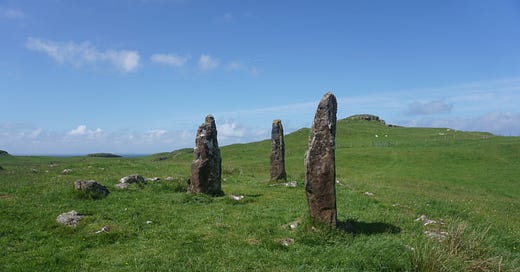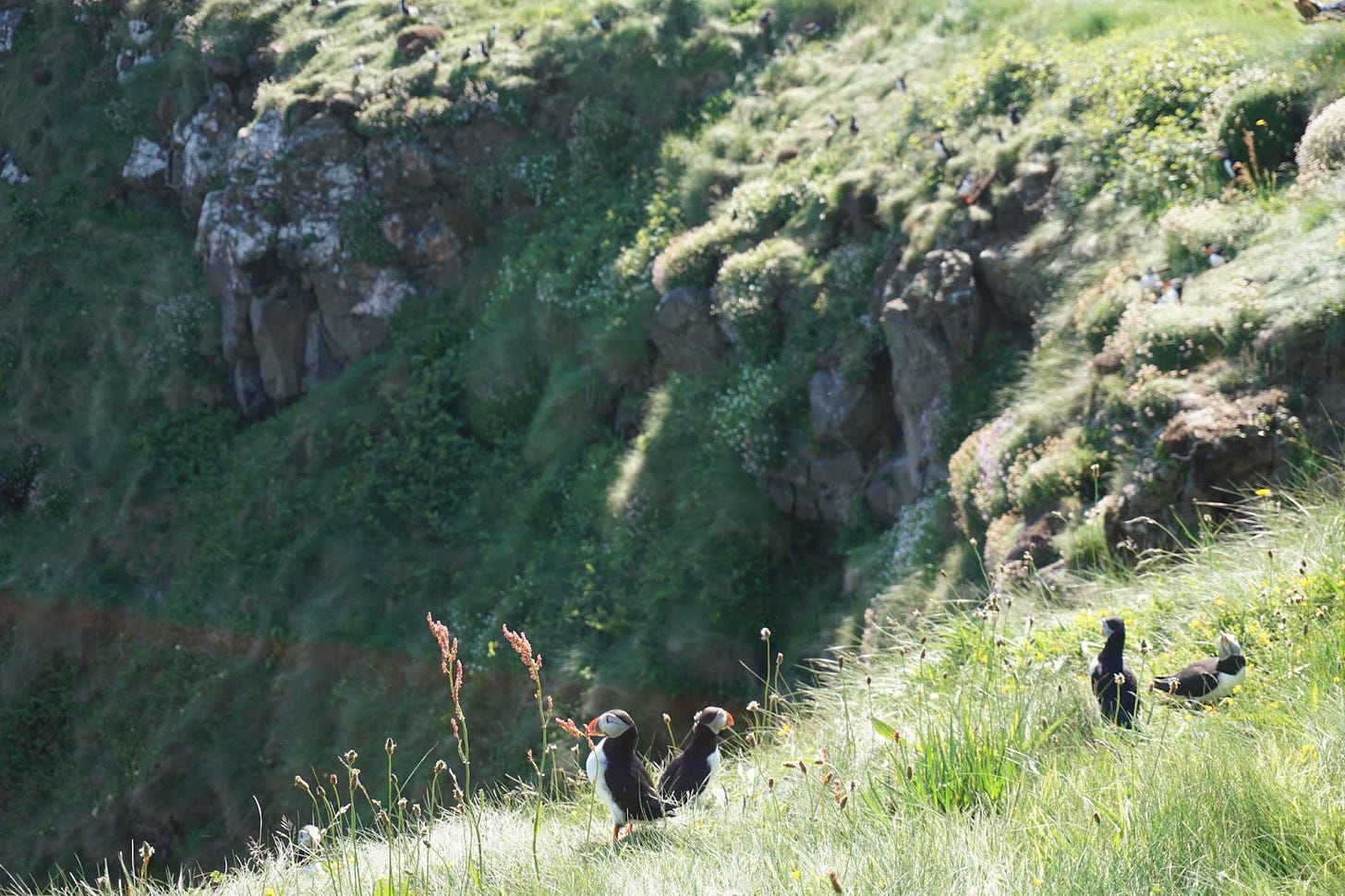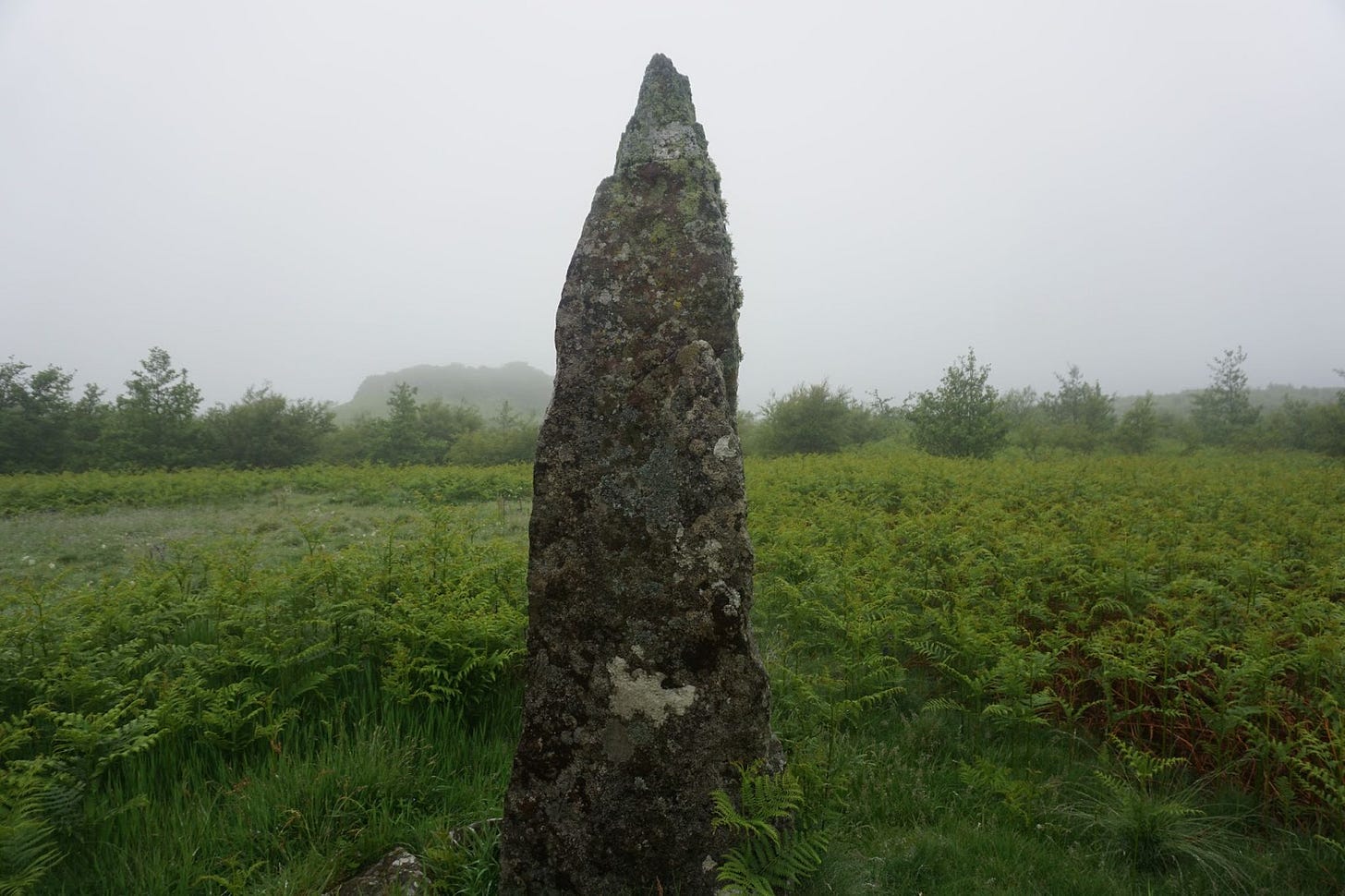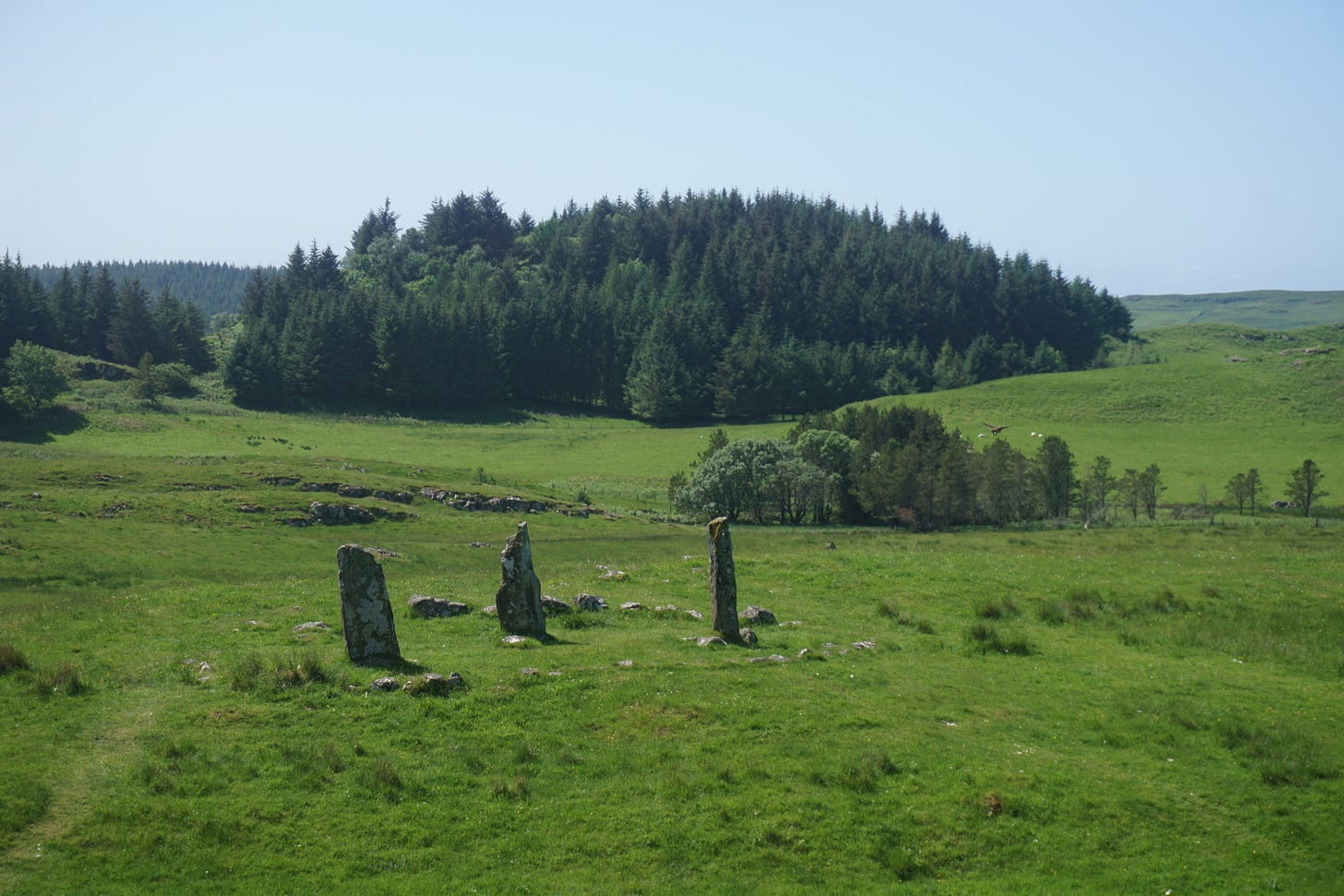Jamie and I recently returned from our honeymoon in the Inner Hebrides — an archipelago of 35 inhabited and 44 uninhabited islands off the west coast of Scotland. Of all of these far-flung and beautiful places, we stayed on the Isle of Ulva (half the size of Manhattan with a population of 11!), visited the Isle of Mull (aka “Scotland in miniature”), and popped over to the Isle of Staffa (home to an impressive brood of puffins, pictured below).
During our stay on the remote Isle of Ulva, we slept in a cozy yurt in the backyard of Ardalum House, a structure built in the 1860s. I will post a YouTube video with footage from our trip soon, but this blog will concern itself with my newest fascination — standing stones — which we were lucky enough to stumble upon during our visit.
Onto the stones
There are no cars on Ulva, so we explored on foot. It rained on our last day there, but we decided not to let that deter us and went on a (rather wet) hike.
Something about the misty day, the moss in the primeval forest, and the silence made it feel like we were going on a mythical quest. And we kind of were, since halfway through the trail, there was a deer fence with a small wooden arrow labeled “standing stone,” pointing to an overgrown field. Suddenly, we had an important mission — to find it. As we moved through the thigh-high, rain-soaked ferns, a tall monolith appeared in the distance, at first shrouded by mist but finally revealing its lichen-covered splendor:
I approached the stone with the same reverence one feels when entering a beautiful church or communing with a very old tree. After several moments of standing silently with Jamie and the stone, I placed my hand on it. Jamie did the same. We stood in the damp, cool air with our eyes closed. And then I started to feel it — a vibration! As if I were touching a cleansed and charged quartz crystal. It was a calming, grounding, gorgeous experience. I sent as much gratitude and good energy in return as thanks.
When we opened our eyes again, Jamie said, “Thank you, to whoever you are!”
At that very moment, the rain stopped. The birds began to sing. The sky brightened. I put my umbrella away. We both laughed in astonishment. Such unexpected magic!
I asked Jamie what he felt when touching the stone, and he said he felt a vibration that went through his hand, arm, body, and into the Earth. We both felt so lucky to be there, in that rainy and remote field, thinking of our human ancestors enjoying this lovely spot thousands of years ago.
The next day, we went to the Isle of Mull to visit Glengorm Castle. The Ulva ferryman who recommended it said it looked like a fairy tale castle on a hill, and he was right. In the castle’s grounds are the picturesque Glengorm standing stones, three upright rocks surrounded by a circle of stones that were more recently placed there.
This site, while gorgeous, did not carry the same potent energy I felt from the monolith on Ulva. Jamie said he felt similarly. I wonder if that had to do with their treatment by human visitors. A couple of the liths had darkened edges where hundreds of people had touched them and left their oily prints behind. One even had pennies tucked into a crack on its surface. My heart ached at the desecration.
But why are they there?
Desperate for answers about when (and how, and why, and by whom) these stones were placed, I contacted Andrew Primrose, an archaeologist on Ulva who put together a report on the island's ruins. He informed me that this particular stone was probably from the late Neolithic era but could also be from the early or middle Bronze Age.
As for why, he let me know that nobody knows for sure what the significance of that particular stone is. However, his current research has him investigating some stone ring circles on Ulva. There is a possibility that these could be recumbent stone circles, and recumbent stone circles elsewhere have been linked to the Moon.
Another famous late Neolithic/early Bronze Age monument is Stonehenge, well-known for marking seasonal astronomical events like equinoxes, solstices, and eclipses. An even older site is Callanish in Scotland, thought to be an astronomical observatory. There are a lot more of these places that link heaven and earth scattered around the UK, and I’m sure many are yet to be discovered.
In sum
It’s of no surprise to me that seeing something so ancient in such a remote place would make me think of the grand scheme of things — the passing of time, the cosmos, and our finite place in both. And I’ll take these very human thoughts into next week, when summer solstice occurs, marking the longest day of the year (that’s an 18-hour long day in Edinburgh!)
Until then ☀️☀ ☀️








